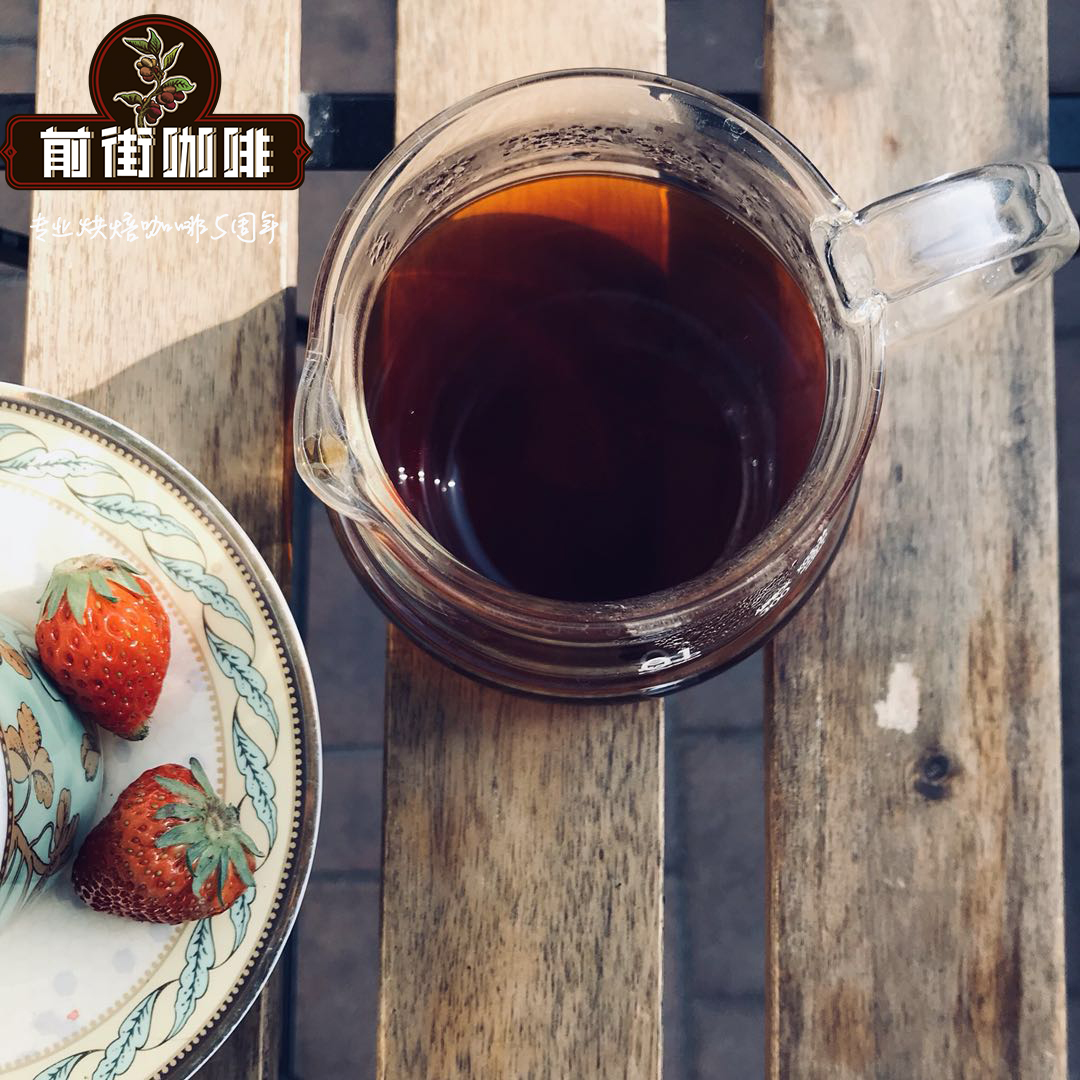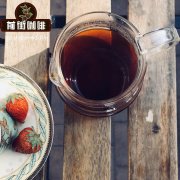Introduction to the Information Story of Finca Kassandra Casadra Manor in the Organic Coffee region of Mexico

Professional coffee knowledge exchange more coffee bean information please follow the coffee workshop (Wechat official account cafe_style)
Introduction
In 1983, Mr. Guillermo Rivas and his father, Mr. Andres Rivas, bought the "Casa Blanca" ranch in Mexico in Veracruz, near the city of Huatusco. This will be the place where Don Andres will retire because he grew up on a farm, a lifestyle reminiscent of his childhood. Andries Rivas Gomez is very modest on the outskirts of Mexico City in the Koyoacan region. His father is a blacksmith and his mother is a Turkish Mexican of the Tehuana tribe, named Trinidad. As a side note, Trini (her nickname) has a cousin named Matilde, an employee of German immigrants, and a photography studio called Wilhelm Kahlo, which is called Guillermo Kahlo in Mexico. As you may know, Matilde and Guillermo married and have four daughters, Matilde, Adrianna, Christina and the famous Frida Carlo. Andries remembers playing a little boy with his cousin. He always talks to me about all their works of art that are famous for their beauty and Frida.
With very little money at home and 10 brothers and sisters, his only choice was to join the Mexican army, and he was quickly promoted. Because he was very good at math, he was invited to attend the first generation of naval engineering academy recently established in Veracruz. Here, he graduated as a naval engineer in 1938 and soon met Maria Isabel Diaz, who became his wife. They had three sons: Andres,Guillermo (in memory of his uncle Guillermo Kahlo) and Luis. During World War II, he continued to be passively involved in transporting oil from the port of Tuxpan Veracruz to the port of Haringen, Texas. My grandfather always told the story of how they were afraid of being attacked by German U ships during their journeys along the Gulf Coast. I didn't believe him until I saw a documentary on TV about the discovery and salvage of the wreckage of a German U-boat off the coast of New Orleans. After the war, he became an electrical engineer at the state-owned electrical company, working from his early 30s to his retirement at the age of 65.
"Rancho Casa Blanca" was originally used for cattle production, but because the Huatusco area is famous for its high-quality coffee, the ranch was converted into a coffee plantation in 1990. The plantation is located 1200 meters above sea level. The annual precipitation is between 1400 mm and 2000 mm, the rainy season is from June to February, and the dry season is from March to May. The average temperature is 22 degrees Celsius, which is the perfect condition for high quality coffee.
The total extension area of the ranch is 46 hectares, of which 38 hectares are planted with Caturra and Catuai varieties of coffee. Through proper farming and management, a yield of 30 Quintales per hectare is achieved, all of which are sold to local factories in the form of cherries. Casablanca now covers an area of 70 hectares and has its own dry mill since 2003.
Mexican Coffee Finca Kassandra begins.
At the end of 1996, Mr. Guillermo Rivas (my father) bought some pastures near "Rancho Casa Blanca". These pastures are merged to form a "Finca Kassandra", extending an area of 465 hectares (actually 606 hectares). Don Guillermo's vision is to turn "Finca Kassandra" into the largest and best coffee farm in Veracruz. The plantation will receive a high yield of "manor quality" coffee, and to ensure this quality, all coffee must be grown and ground in "Finca Kassandra".
Although "Finca Kassandra" is 10 miles from "Casa Blanca Ranch" and is located on the road from Huatusco to Coahtepec, the conditions here are more conducive to coffee production. Although the temperature is relatively low (an average of 19 degrees per year), the annual precipitation is roughly the same, in part because the altitude is between 1250 and 1450 meters above sea level.
The plantation.
Ensure that coffee varieties are used in plantations, of which the purest form visits El Salvador, Guatemala, Jamaica, Costa Rica, Colombia and Brazil. Obtained from this country's seed Pacamara,Caturra,Catuai and Typica (Jamaican Blue Mountains) varieties. The plantation began in June 1997 at the beginning of the rainy season, since which 398 hectares have been planted and 40 hectares of land will be available by 2004. In order to ensure sanctuary for wildlife, 27 hectares of land has not yet been planted. Pristine rainforest.
Since "Finca Kassandra" was originally used to raise cattle, the previous owners did not leave too many trees, so they decided to start an open-air plantation similar to that used by high-yield farms in Costa Rica. This view has slowly changed for a variety of reasons, and plans are being developed to plant shade trees of both local and foreign varieties. This helps coffee happen when it is cold, now and then in Finca Kassandra.
Although shade reduces the productivity of coffee trees, plants work better because they are less stressful, produce less, retain more water on the ground during the dry season, and improve the quality of cups. Shade can also protect trees from cold weather, which may be a problem at high elevations of plantations. Shade trees are home to many permanent and migratory birds.
Now one day, I have the honor to take over the management of Finca Kassandra and Casa Blanca, continue to leave the legacy of my graduate Don Andres started and my father continued and passed on to me is a great responsibility. We miss Don Andres and Do ñ aChabela, but their spirit, values and stories all live in the trees and coffee produced by Finca Kassandra.
The Legend of Kassandra Pacamara
It all started in 1994, when my father and grandfather decided to launch the Finca Kassandra and Casa Blanca plantations and get Rainforest Alliance certification.
Since we had to protect and protect the virgin forests on our land, we decided to use native forest plots that had not been affected for centuries, because I guess former owners found these trees difficult to grind and sell. 1250 to 1400 meters above sea level. We have begun to protect native species and found a Mexican elm that is considered extinct in our area because of deforestation, but now we are trying to replant in the Mexican oak where we grow Pacamara coffee.
We decided to plant the pacamara variety because we told it it had a unique flavor, soy and existing aroma, only problems … A very low yield.
As the forest is very dense, we decided to continue this project, because under the thick tree cover you do not get a lot of coffee, you will get a very interesting taste. Our bet was successful because about eight years ago our mini Pacamara won the competition and attracted people's attention in Hong Kong, the United States (Michigan), South Korea and Australia.
We only produce about 60 bags a year, but they are highly sought after and cost an average of more than $3.50 per pound a year. That's the FOB price of our Veracruz farm!
As for the process of choosing cherry peak season, we always harvest pacamara last, because we wait to select all cherry ripe and crimson wines! This makes plums, chocolate, pears, oranges and some wines very interesting. Aroma is always characteristic of our pacamara, although some people say it needs some body, I personally like it directly, but sometimes mixed with Kassandra Peaberry for my baking customers in Mexico, sometimes it is worth enjoying.
I never mix green because the shape of the pacamara of a few round beans as long and narrow as the original Typica does not go well when roasted at the same time as other coffees. You will be baking another cup of coffee or possibly burning long-lived pacamara beans.
If mixed, we prefer to use roasted coffee rather than green before roasting. This is also because we like to bake Pacamara on the lighter side, but everyone likes to bake it!
In the factory, we use a specially calibrated desizing machine to remove pacamara, which uses a small amount of water from the Penagos variety from Colombia. Then we take a break to get some mucus (but not entirely because our customers prefer some of the sweetness of the honey in the mucus, why some people call it the honey coffee process), but not all. Then we wash and enter the dryer, and we use a Guaranio dryer or cylindrical dryer, but never more than 60 degrees Celsius to ensure that we keep the embryos of the coffee beans alive. In theory, this means that coffee can still sprout if it leaves parchment after drying.
Since we have a pacamara we have to select the bean size through special screening and more than 80% of the beans exceed the sieve size 19, usually Mexican coffee is graded by 80% on screen 16, but for Kassandra Pacamara we use larger beans, even though the adzuki beans we found have the same aroma and taste, our customers prefer this method, and we always comply with their requirements.
Mexican Coffee Kassandra SHG Caturra
Kassandra_1.png
□ producing area: Cordoba Cordoba / Veracruz Veracruz
□ producer: Casadra Manor (Rivas Family / Kassandra)
□ altitude: 1500
□ variety: Kaddura Caturra
□ treatment: washing
□ level: SHG
□ flavor description: fruity, walnut, milk chocolate flavor, sweet citrus flavor.
□ Casadra Manor, International Rainforest Certification, second in 2015COE and second in 2017COE. The manor is located in the Veracruz (Veracruz) producing area where coffee was first grown in Mexico. With a friendly and ecological attitude, the family of Rivas, the owner of the estate, has retained 27 acres of rainforest in the park, where birds and wildlife live, and large-scale tree planting projects are still under way.
Casadra Manor, Mexico. Jpg
A brief history of □ Finca Kassandra.
Important Notice :
前街咖啡 FrontStreet Coffee has moved to new addredd:
FrontStreet Coffee Address: 315,Donghua East Road,GuangZhou
Tel:020 38364473
- Prev

Introduction to the Information Story of Finca Kassandra Casadra Manor in the Organic Coffee region of Mexico
For more information on coffee beans, please follow the coffee workshop (official Wechat account cafe_style). In 1983, Mr. Guillermo Rivas and his father, Mr. Andres Rivas, bought Casa Blanca Shepherd in Mexico in Veracruz, near the city of Huatusco.
- Next

Mexico native coffee brand Chiapas coffee producing area fair trade CESMACH cooperative information
Coffee workshop (Wechat official account cafe_style) Mexico is one of the largest producers of organic certified coffee, and Chiapas, located in the south, is the most important coffee producing area in Mexico, connected to the highlands of Guatemala and provides an excellent growing environment. Since 1988, the government has provided simple loans to farmers.
Related
- Detailed explanation of Jadeite planting Land in Panamanian Jadeite Manor introduction to the grading system of Jadeite competitive bidding, Red bid, Green bid and Rose Summer
- Story of Coffee planting in Brenka region of Costa Rica Stonehenge Manor anaerobic heavy honey treatment of flavor mouth
- What's on the barrel of Blue Mountain Coffee beans?
- Can American coffee also pull flowers? How to use hot American style to pull out a good-looking pattern?
- Can you make a cold extract with coffee beans? What is the right proportion for cold-extracted coffee formula?
- Indonesian PWN Gold Mandrine Coffee Origin Features Flavor How to Chong? Mandolin coffee is American.
- A brief introduction to the flavor characteristics of Brazilian yellow bourbon coffee beans
- What is the effect of different water quality on the flavor of cold-extracted coffee? What kind of water is best for brewing coffee?
- Why do you think of Rose Summer whenever you mention Panamanian coffee?
- Introduction to the characteristics of authentic blue mountain coffee bean producing areas? What is the CIB Coffee Authority in Jamaica?

